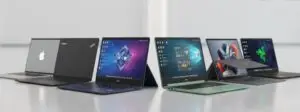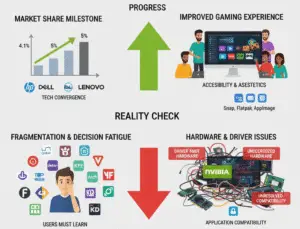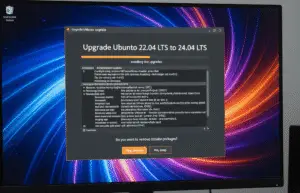
Robotics in 2025: Your Friendly Guide to the Robot Revolution

Introduction: Robots Are Here to Help
Picture this: It’s 2025, and a gentle robot helps your grandmother get out of bed in the morning, while another robot harvests strawberries at a farm with delicate precision. Nearby, a robotic dog plays with children in the park. This isn’t science fiction—these robots exist today and will become even more common by 2025.
Robotics is the science of designing, building, and using machines (robots) to do tasks for us. Let’s explore how robots will change our lives in simple terms, with real-world examples anyone can understand.
What Exactly is a Robot?
A robot is a smart machine that can:
-
Sense its environment (using cameras, sensors)
-
Think (follow instructions or make simple decisions)
-
Act (move, grab things, or perform tasks)
Key Idea: Robots aren’t always human-looking machines. They come in all shapes for different jobs!
Types of Robots We’ll See Everywhere in 2025
1. Helper Robots at Home
-
Vacuuming robots (like Roomba, but smarter)
-
Laundry-folding robots
-
Cooking assistants
-
Example: Samsung’s Bot Handy can pick up toys and load dishes
2. Medical Robots
-
Surgery robots (more precise than human hands)
-
Rehabilitation robots (helping people walk again)
-
Elderly care companions
-
Example: da Vinci Surgical System helps doctors perform delicate operations
3. Delivery & Service Robots
-
Food delivery robots on sidewalks
-
Hotel robots bringing towels to your room
-
Example: Starship’s food delivery robots already work on college campuses
4. Factory & Warehouse Robots
-
Assembly line robots building cars
-
Packaging robots preparing online orders
-
Example: Amazon uses over 200,000 warehouse robots
5. Agricultural Robots
-
Autonomous tractors
-
Fruit-picking robots
-
Weeding robots
-
Example: John Deere’s self-driving tractors
6. Exploration Robots
-
Mars rovers (like NASA’s Perseverance)
-
Deep-sea exploration robots
-
Disaster rescue robots
-
Example: Boston Dynamics’ robots can open doors and climb stairs
How Robots Work (Simple Explanation)
-
Input: Sensors collect information (like cameras seeing objects)
-
Processing: Computer brain decides what to do
-
Output: Motors and arms perform the action
-
Feedback: Sensors check if it worked and adjust
Example: A robot vacuum sees dirt with its camera (input), decides to move forward (processing), turns on its vacuum (output), and checks if the spot is clean (feedback).
Why Robotics Will Boom by 2025
1. Better Artificial Intelligence
-
Robots can understand and learn like never before
-
Example: Robots that learn how you like your coffee
2. Improved Sensors
-
Robots can “see” and “feel” more accurately
-
Example: Tactile sensors let robots handle fragile eggs
3. 5G Connectivity
-
Robots can share information instantly
-
Example: Farm robots communicating about crop health
4. More Affordable Parts
-
Robot costs are dropping fast
-
Example: Educational robot kits under $100
Robots vs. Humans: Who Does What Best?
| Task | Humans Better At | Robots Better At |
|---|---|---|
| Creative work | Writing stories |  |
| Precision tasks | Performing the same exact movement 10,000 times | |
| Emotional care | Comforting children |  |
| Dangerous jobs | Working in toxic environments | |
| Quick decisions | Handling unexpected situations |  |
Key Point: Robots are tools to help humans, not replace us!
Challenges We Need to Solve
-
Safety Concerns – Making sure robots don’t accidentally hurt people
-
Job Changes – Helping workers learn new robot-related skills
-
Cost Barriers – Making robots affordable for small businesses
-
Public Trust – Helping people feel comfortable with robots
Cool Robot Examples You Can See Today
| Robot | What It Does | Why It’s Cool |
|---|---|---|
| Pepper | Talks with customers in stores | Recognizes human emotions |
| Spot | Walks like a dog, inspects dangerous areas | Made by Boston Dynamics |
| Moxie | Helps children learn social skills | Changes expressions like a real face |
| FarmBot | Plants and waters home gardens | You can build it yourself |
The Future: What to Expect by 2025
-
More “cobots” (robots that work safely alongside humans)
-
Robot teachers helping in classrooms
-
Personal robot assistants in more homes
-
Flying delivery robots in some cities
Example Picture: You might have a kitchen robot that helps chop vegetables while you cook, learning your preferences over time.
Conclusion: Robots as Helpful Friends
By 2025, robots won’t be scary machines from movies—they’ll be helpful tools that make our lives easier, safer, and more interesting. The best robots will be those that solve real problems while working naturally with humans.
Remember: Robots are like advanced hammers or computers—they’re only as good as how we choose to use them. The future isn’t about robots taking over, but about people and robots working together to create a better world.




